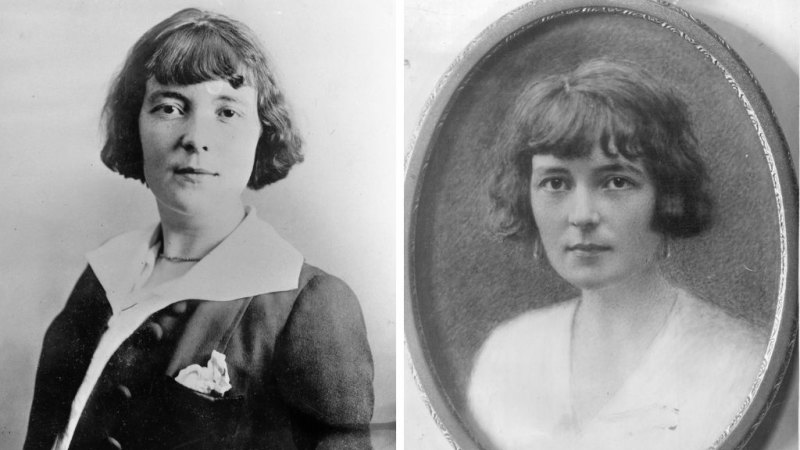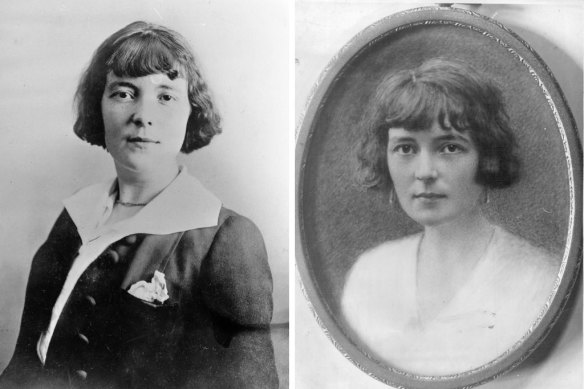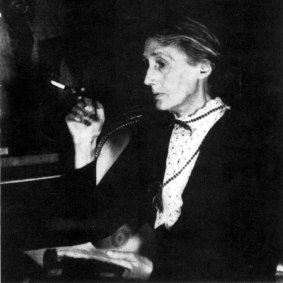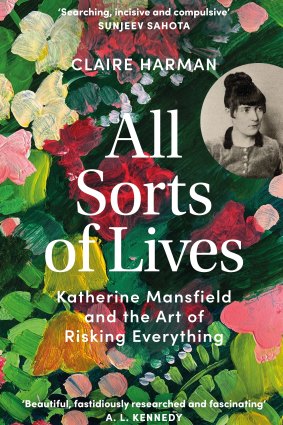Save articles for later
Add articles to your saved list and come back to them any time.
BIOGRAPHY
All Sorts of Lives: Katherine Mansfield and the Art of Risking Everything
Clare Harman
Chatto & Windus, $35
Katherine Mansfield’s short, tumultuous life was lived at high speed. She seemed never to plan or calculate: all she wanted, she said, was to live and to write. That sounds a minimal demand, but for her, it was a struggle. Born in 1888, she was destined to die at the age of 34 and to leave a small but near-perfect body of work in short fiction.
Katherine Mansfield was uncompromising in her work and in her life.Credit:
This “little nobody from New Zealand”, who began her London life in 1908, accomplished the unlikely feat of provoking both Virginia Woolf and D.H. Lawrence to use uncontrolled and insulting language about her. Colonials weren’t of much account in literary London but Mansfield, who had been to school in England, was not intimidated by the Bloomsbury circle or by Lady Ottoline Morell’s artistic salon. Eventually, Woolf admitted she envied Mansfield, who “could do things that I cannot do”. She was “the only writer I have ever been jealous of”, Woolf wrote.
Virginia Woolf said Mansfield was the only writer of whom she was jealous.Credit:
Mansfield always said what she thought. When E.M. Forster’s Howard’s End appeared in 1910, she was not impressed. “Not good enough,” she wrote in her journal. “[Forster] never gets any further than warming the teapot. He’s a rare fine hand at that. But there ain’t going to be no tea.” At 22, this aspiring writer was sure of her judgment. Mansfield was almost as dismissive about Woolf’s Night and Day. It was fusty and old-fashioned, she thought, and written as if the 1914-18 war hadn’t happened.
Mansfield’s own writing owed little to English models. For her, Chekhov’s short stories were the most influential. Like Chekhov, she tried to intensify the small things of life, so that everything was significant: moments of being, hesitations, doubts, beginnings. The “self” of her stories was not only multiple but constantly shifting.
Credit:
Given the intensity of her desire to develop as a writer, and the perfectionism she brought to her art, one might expect a quiet life as a precondition. But in life as in art, Mansfield never compromised. Her heedless quest for love brought more misery than ecstasy. Pregnant after an episode in which she is thought to have been drugged and raped, she married a compliant admirer, left him on their wedding night, and found herself alone and ill in “cheap and horrible digs” in London.
When the news reached her family in New Zealand, her mother travelled to England and took Mansfield to a spa town in Bavaria, where the water treatment was used as a cover story for the pregnancy. Whether a miscarriage or a stillbirth followed is not known. There was a divorce from her husband of a day. Eventually, after another disastrous affair in which she contracted gonorrhoea, Mansfield married a literary journalist, John Middleton Murry.
Her life with Murry began well; they had some happy and companionable years. It seems that Mansfield tolerated Murry’s many infidelities and his meanness with money. It would have been harder to forgive his neglectfulness when she became fatally ill with tuberculosis. He left her to be attended by strangers in France while he flirted with the former prime minister’s daughter in England. After Mansfield’s death, Murry busied himself, against her wishes, in getting all her work, fragments and failures included, into print. Her friends described this post-mortem activity as boiling Mansfield’s bones to make soup for himself.
Mansfield’s latest biographer, Clare Harman, gives a balanced view of her life and work. Choosing 10 of Mansfield’s stories she discusses each one in the context of its time. Her sharp and lively commentary outlines the circumstances in which they were written and the way in which each shows its author’s growing mastery of the short story form.
As well as several little known works that give a sense of Mansfield’s trajectory, Harman discusses the black-comic artistry of Daughters of the Late Colonel, the gentler New Zealand stories, and the painful allegory of war, The Fly.
These days Katherine Mansfield is not well known, so this intelligent and engaging biography is doubly welcome. Mansfield’s comparative obscurity makes me wonder if we are snobbish about literary forms, putting the novel up on the top shelf and giving poetry its special distinction. The short story, which may be the most exacting form of all, doesn’t rate. There are exceptions – William Trevor is one – but on the whole a list of Great Books is likely to be made up of novels, with a polite nod to poetry.
Imagine an interviewer of today fronting up to Katherine Mansfield. “And now, Katherine, after those terrific stories of yours, when are we going to have a novel from you?” What would she say? Read this new biography to find out why short fiction was her unwavering choice. Better still, read her stories.
Brenda Niall’s most recent book is my Accidental Career (Text).
The Booklist is a weekly newsletter for book lovers from books editor Jason Steger. Get it delivered every Friday.
Most Viewed in Culture
From our partners
Source: Read Full Article




